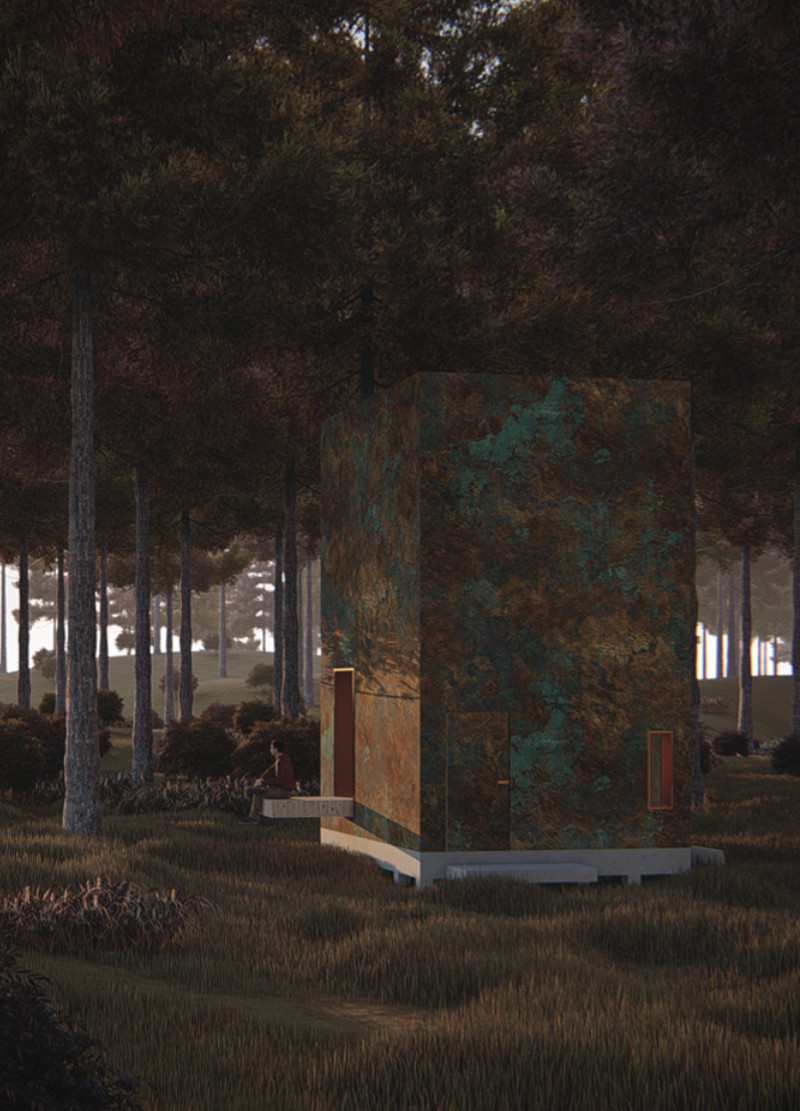5 key facts about this project
The architectural intervention in Ozolini is located between the Ozolini house and Lake Bezdibenė, in a region known for its cold and humid climate, as well as dense vegetation. The design focuses on establishing a strong relationship with the surrounding nature while providing functional spaces that enhance visitor experience. A linear axis connects the house to the lake, from which secondary paths extend toward the cabins, facilitating a natural flow through the landscape.
Design Organization
The layout features a main axis that creates a clear path linking important points like the house and lake. This organization helps preserve the existing vegetation while allowing easy navigation. The cabins are thoughtfully placed along the axis to encourage interaction between people and the natural environment.
Verticality and Facade
The design adopts a small footprint with a compact shape, reflecting the tall Norway Spruce trees nearby. This approach not only allows for maximized sunlight access but also enhances the sense of space inside the buildings. The facade includes openings that frame views of the landscape, creating an engaging connection between indoor and outdoor areas.
Heating System
A notable feature is the heating system, inspired by the traditional Roman "Hypocaust." By using wood combustion, heat is generated and distributed throughout the space. This modern version of an ancient system effectively addresses the cold climate, reducing the need for electric heating and promoting energy efficiency.
Material Palette
The choice of materials enhances both functionality and aesthetics. The facade is covered in patinated copper, which connects the building to its natural surroundings as it ages. Ceramic tiles are included for their thermal benefits, along with earth bricks that help retain heat. Additionally, pinewood elements create a warm and inviting atmosphere inside the spaces.
The design culminates in framed views that invite interaction with the landscape, highlighting the commitment to harmonizing everyday experiences with the surrounding environment.



























